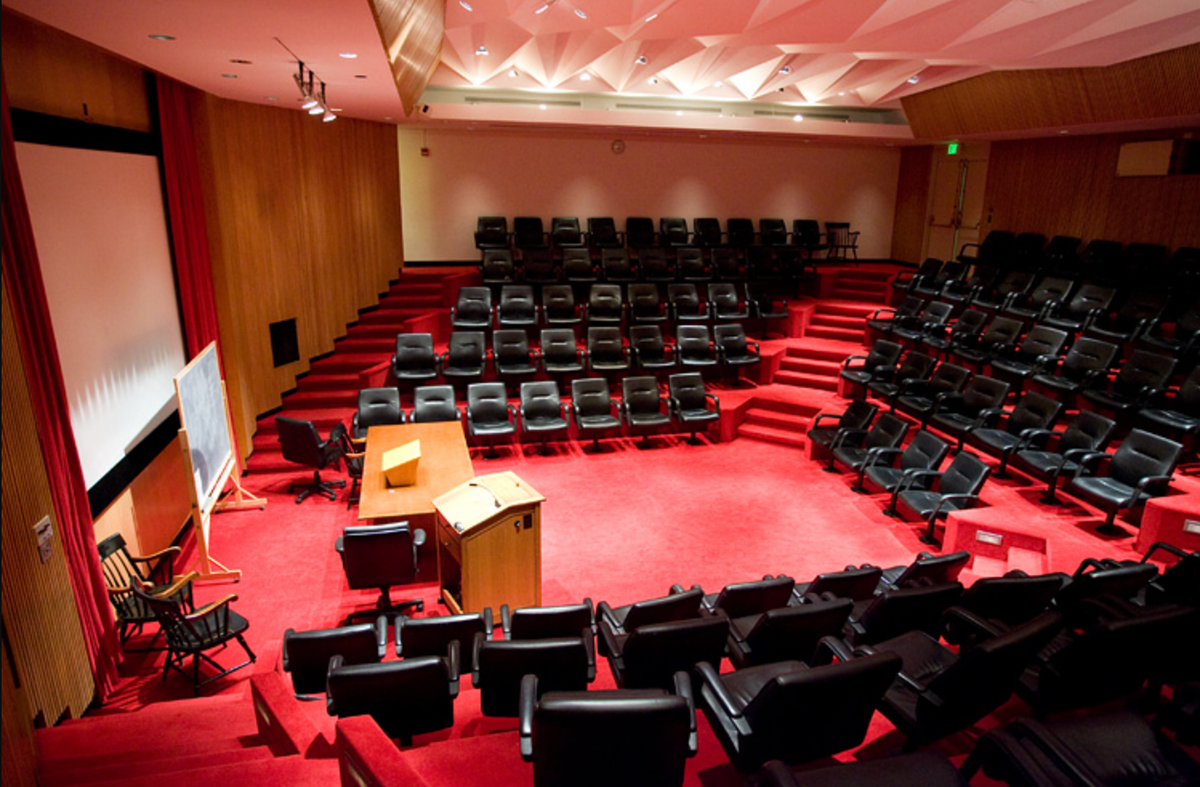AAS Votes to Dissolve Non-Profit Status
At the AAS meeting last week, senators passed a resolution that seeks to end the group’s status as a non-profit corporation. The resolution promises to ease the legal burden on senators while improving the group’s efficiency.

The Association of Amherst Students (AAS) voted unanimously at their meeting last Monday to pass a resolution formally dissolving the group’s status as a non-profit corporation.
The resolution acts to “voluntarily dissolve Association of Amherst Students Inc. (the ‘Corporation’)” and formally integrate the student government into the college’s finances, a move conducted in order to eliminate the legal liability of AAS members while allowing AAS’ more efficient access to its own resources.
While it is not fully known why AAS was first established as a non-profit upon its founding in the 1980s, it “probably had something to do with financial independence from the college, and not wanting to feel like we were only able to fund things that the college approved of,” AAS President Gent Malushaga ’25 said. However, “in practice, that wasn’t really how we functioned because the college still decided what portion of the Student Activities fee to give us every year,” he said
The AAS has traditionally received funding from the college through an off-campus bank account, which then became the legal responsibility of Senate members. This financial structure became a sizable burden upon whichever student held the post of AAS treasurer, as they were responsible for conducting the Senate’s taxes and legally liable for the corporation’s $1.2 million annual budget.
“As you can imagine, it was a huge liability issue,” Malushaga said. “Having, in recent years, over a million dollars yearly under the supervision of a full-time student who does not have any sort of professional background in accounting.”
As it turned out, mistakes did indeed occur. After AAS discovered that it was in possession of a huge budget deficit in 2023, the College was forced to provide a $200,000 bailout to the group that fall, which, according to Director for Student Engagement and Leadership Rachel Kremer, prompted the initial conversations between the AAS executive board and college leadership over disbanding the group’s non-profit status.
“Since AAS was exclusively student-run—operating as an independent organization—this made students legally liable,” Kremer said. “Rather than expose our student leaders to additional unnecessary risk, the college and AAS leadership determined it would be more beneficial to the students for the College to hold that responsibility,” she explained.
In addition to eliminating the legal responsibility of student senators, the resolution formally changes the financial structure of the Senate. Now, instead of operating their own off-campus bank account, the AAS is “a bank account of the college,” a move that both Malushaga and Kremer believe will improve the financial efficiency of the Senate.
“It has created a more secure and efficient financial structure and system for AAS, as all processes now happen within the college’s systems electronically, including purchases and payments to vendors or students,” Kremer said.
“It just makes it a lot easier for us to keep track of where money’s coming and going,” Malushaga added. “We’re able to get student payments and reimbursements out a lot quicker.”
As part of the resolution, AAS Senators will be removed from their posts on the board of directors of the non-profit and replaced instead by Kremer and fellow members of the Amherst administration. While the AAS resolution officially separates the Senate as a student group from the non-profit, the non-profit itself will now be dissolved by the new board of directors.
According to Kremer, “it is complex and time-consuming to formally resolve a nonprofit in Massachusetts,” and this change was made because it “allows college administrators to work on the process while not burdening AAS leadership with the additional responsibility.”
While the AAS’s finances have been relatively unchanged by the integration with the college, access to the group’s “rainy day fund,” reserve money from semesters prior to fall 2024 saved in the case of an unexpected disruption to funding, is restricted until the finalization of the group’s non-profit dissolution. While the reserve funds are still in the group’s off-campus bank account, Kremer said they will be moved to campus after the legal process is finished.
Malushaga believes the change will ultimately benefit the entire student body. “I think it’s somewhat trivial, but it’s kind of an important step in terms of ensuring that we won’t be legally liable for anything. And that makes it easier for us to do our job,” he said.
Kremer added that the college and student body both owe gratitude to the current AAS executive board members for their work in initiating the resolution.
“They spoke at length with senior leadership, thoroughly researched impacts and possibilities, and communicated with students regularly to keep them informed,” Kremer said. “Their work has been exceptional.”


Comments ()